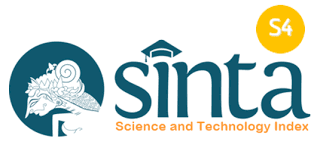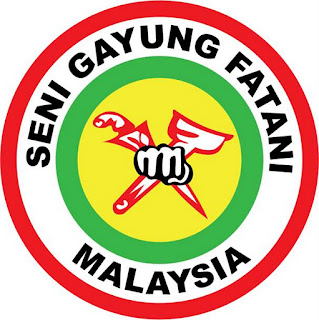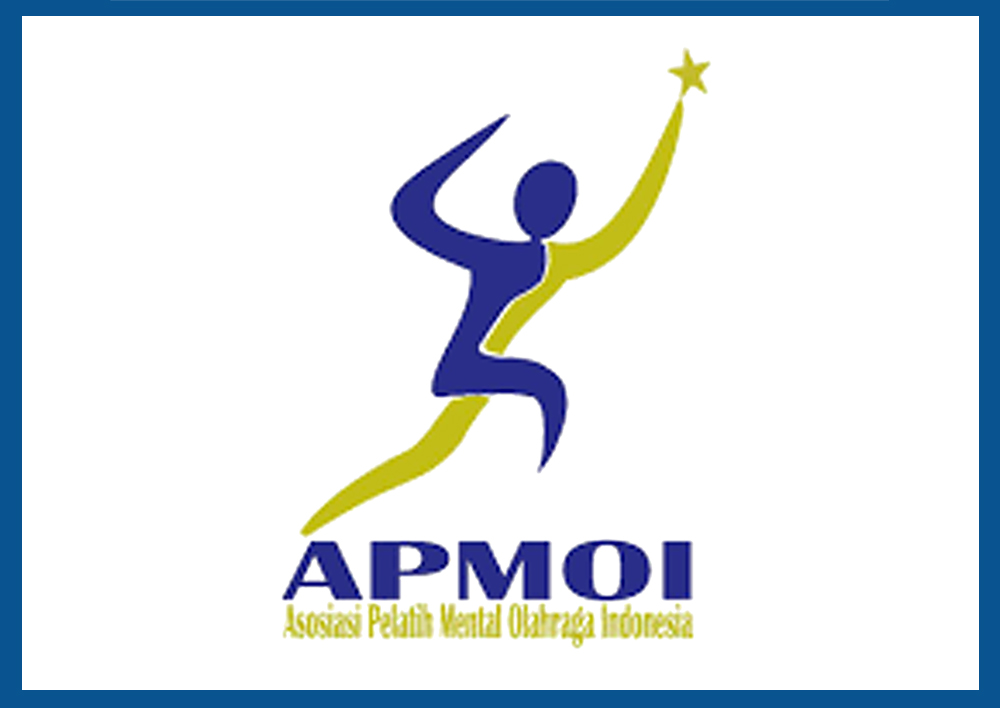Pengaruh Status Gizi, Kesegaran Jasmani dan Motivasi Belajar terhadap Hasil Belajar PJOK
Abstract
Penelitian ini bertujuan untuk menganalisis dampak dari status gizi dan kesegaran jasmani serta motivasi belajar sebagai faktor untama yang berpengaruh terhadap hasil belajar pendidikan jasmani. Pembelajaran afektif dilaporkan menjadi salah satu faktor kunci dalam pencapaian hasil belajar pendidikan jasmani. Fokus dalam penelitian ini pada faktor status gizi, kesegaran jasmani, motivasi dan belajar siswa. Kami melakukan survei kepada siswa dalam jumlah 41 orang. Kemudian memeriksa temuan menggunakan statistik deskriptif, dengan memanfaakan IBM SPSS software. Hasil menunjukkan bahwa, terdapat pengaruh secara lansung maupun tidak langsung dari prediktor statu gizi, kesegaran jasmani, dan motivasi belajar terhadap hasil belajar pendidikan jasmani. Kekuatan pengaruh langsung dan tidak langsung mengidentifikasi bahwa secara signifikan perpengaruh positif antara status gizi dan kesegaran jasmani melalui motivasi belajar terhadap hasil belajar PJOK Siswa SD Negeri 11 Silokek Kabupaten Sijunjung.
Downloads
References
Antoniazzi, L. D., Aballay, L. R. R., Fernandez, A. R., & Fiol de Cuneo, M. (2018). [The nutritional status analysis in physical education students, associated with eating habits and level of physical activity]. Revista de La Facultad de Ciencias Medicas (Cordoba, Argentina), 75(2). https://doi.org/10.31053/1853.0605.v75.n2.20793
Bagøien, T. E., Halvari, H., & Nesheim, H. (2010). Self-determined motivation in physical education and its links to motivation for leisure-time physical activity, physical activity, and well-being in general. Perceptual and Motor Skills, 111(2). https://doi.org/10.2466/06.10.11.13.14.PMS.111.5.407-432
Bui, K. L., Maia, N., Saey, D., Dechman, G., Maltais, F., Camp, P. G., & Mathur, S. (2019). Reliability of quadriceps muscle power and explosive force, and relationship to physical function in people with chronic obstructive pulmonary disease: an observational prospective multicenter study. Physiotherapy Theory and Practice. https://doi.org/10.1080/09593985.2019.1669233
Burghardt, G. M. (2012). Defining and Recognizing Play. In The Oxford Handbook of the Development of Play. https://doi.org/10.1093/oxfordhb/9780195393002.013.0002
Chen, S., & Gu, X. (2018). Effects of cardiorespiratory fitness and weight status on knowledge of physical activity and fitness, attitude toward physical education, and physical activity. BMC Public Health, 18(1). https://doi.org/10.1186/s12889-018-5176-4
Djoni Rumondor, Motto, C. A., & Patras, M. D. (2019). Relationship between Nutritional Status and Physical Freshness Levels with Learning Outcomes of Physical, Sports and Health Education. Britain International of Linguistics Arts and Education (BIoLAE) Journal, 1(2). https://doi.org/10.33258/biolae.v1i2.98
Durán-Agüero, S., Valdes-Badilla, P., Cumillaf, A. G., & Herrera-Valenzuela, T. (2015). Consumption of fruits and its association with nutritional status in chilean university students career of physical education. Nutricion Hospitalaria, 31(5). https://doi.org/10.3305/nh.2015.31.5.8617
Fiske, S. T., Cuddy, A. J. C., & Glick, P. (2007). Universal dimensions of social cognition: warmth and competence. In Trends in Cognitive Sciences. https://doi.org/10.1016/j.tics.2006.11.005
Gea-García, G. M., González-Gálvez, N., Espeso-García, A., Marcos-Pardo, P. J., González-Fernández, F. T., & Martínez-Aranda, L. M. (2020). Relationship Between the Practice of Physical Activity and Physical Fitness in Physical Education Students: The Integrated Regulation As a Mediating Variable. Frontiers in Psychology, 11. https://doi.org/10.3389/fpsyg.2020.01910
Godoy Cumillaf, A., Valdes Badilla, P., Farina Herrera, C., Carcamo Mora, F., Medina Herrera, B., Meneses Sandoval, E., Gedda Munoz, R., & Duran Aguero, S. (2015). [ASSOCIATION BETWEEN FITNESS, NUTRITIONAL STATUS AND ACADEMIC PERFORMANCE IN PHYSICAL EDUCATION STUDENTS]. Nutricion Hospitalaria, 32(4).
Han, Y., Ali, S. K. B. S., & Ji, L. (2021). Effects of crossfit intervention on students’ physical fitness in physical education: A systematic review and meta-analysis. Journal of Physical Education and Sport, 21(5). https://doi.org/10.7752/jpes.2021.05346
Hernández-Mosqueira, C., Quezada, H. C., Peña-Troncoso, S., da Silva, S. F., Cresp-Barría, M., Cárcamo-Oyarzun, J., Martínez-Salazar, C., Caniuqueo-Vargas, A., & Filho, J. F. (2020). Assessment of the nutritional status and physical condition of basic education students in Chile. Nutricion Hospitalaria, 37(6). https://doi.org/10.20960/nh.03092
Koca, F., & Ph, D. (2016). Motivation to Learn and Teacher – Student Relationship. Journal of International Education and Leadership, 6(2).
Kroeker, J. (2020). The Cambridge Handbook of Play: Developmental and Disciplinary Perspectives. American Journal of Play, 12(2).
Lage, M. J., Platt, G. J., & Treglia, M. (2000a). Inverting the classroom: A gateway to creating an inclusive learning environment. Journal of Economic Education, 31(1). https://doi.org/10.1080/00220480009596759
Lage, M. J., Platt, G. J., & Treglia, M. (2000b). Inverting the Classroom: A Gateway to Creating an Inclusive Learning Environment. The Journal of Economic Education, 31(1). https://doi.org/10.2307/1183338
Laumara, I., Humaedi, H., & Abduh, I. (2018). Pengaruh kecerdasan emosional dan motivasi belajar terhadap hasil belajar pendidikan jasmani siswa di MTsN Al-Ikhlas Kilo. Tadulako Journal Sport Sciences And Physical Education, 6(1).
Mellou, E. (1994). Play Theories: A contemporary review. Early Child Development and Care, 102(1). https://doi.org/10.1080/0300443941020107
Mintjens, S., Menting, M. D., Daams, J. G., van Poppel, M. N. M., Roseboom, T. J., & Gemke, R. J. B. J. (2018). Cardiorespiratory Fitness in Childhood and Adolescence Affects Future Cardiovascular Risk Factors: A Systematic Review of Longitudinal Studies. In Sports Medicine (Vol. 48, Issue 11). https://doi.org/10.1007/s40279-018-0974-5
Mintjens, S., Menting, M. D., Daams, J. G., van Poppel, M. N. M., Roseboom, T. J., & Gemke, R. J. B. J. (2019). Reply to Tarp et al.: Comment on: “Cardiorespiratory Fitness in Childhood and Adolescence Affects Future Cardiovascular Risk Factors: A Systematic Review of Longitudinal Studies.” In Sports Medicine (Vol. 49, Issue 1). https://doi.org/10.1007/s40279-018-01042-0
Nyoman, I. D. (2002). Penilaian Status Gizi. uku Kedokteran.
Puspita, L. (2018). Pengaruh Motivasi Belajar Dan Percaya Diri Terhadap Hasil Belajar Pendidikan Jasmani Olahraga Pada Siswa Tunarungu Sekolah Luar Biasa. SPORTIVE: Journal Of Physical Education, Sport and Recreation, 1(2). https://doi.org/10.26858/sportive.v1i2.5623
Raustorp, A., Pagels, P., Boldemann, C., Cosco, N., Söderström, M., & Mårtensson, F. (2012). Accelerometer measured level of physical activity indoors and outdoors during preschool time in Sweden and the United States. Journal of Physical Activity and Health, 9(6). https://doi.org/10.1123/jpah.9.6.801
Reeve, J. (2009). Why teachers adopt a controlling motivating style toward students and how they can become more autonomy supportive. Educational Psychologist, 44(3). https://doi.org/10.1080/00461520903028990
Rozi, F. (2021). ANALYSIS OF THE NUTRITIONAL STATUS OF IAIN SALATIGA STUDENTS IN PHYSICAL EDUCATION LECTURES. PHEDHERAL, 18(1). https://doi.org/10.20961/phduns.v18i1.51266
Saputra, I. (2015). Modifikasi Media Pembelajaran Pendidikan Jasmani Sekolah Dasar. Jurnal, 17(2).
Tarp, J., Dalene, K. E., Steene-Johannessen, J., & Ekelund, U. (2019). Comment on: “Cardiorespiratory Fitness in Childhood and Adolescence Affects Future Cardiovascular Risk Factors: A Systematic Review of Longitudinal Studies.” In Sports Medicine (Vol. 49, Issue 1). https://doi.org/10.1007/s40279-018-01035-z
Vallerand, R. J., Pelletier, L. G., Blais, M. R., Briere, N. M., Senecal, C., & Vallieres, E. F. (1992). The academic motivation scale: A measure of intrinsic, extrinsic, and amotivation in education. Educational and Psychological Measurement. https://doi.org/10.1177/0013164492052004025
Copyright (c) 2022 Jurnal Patriot

This work is licensed under a Creative Commons Attribution-ShareAlike 4.0 International License.



_(700_x_400_mm)_(3)_.png)


_(700_x_400_mm)_1.png)



